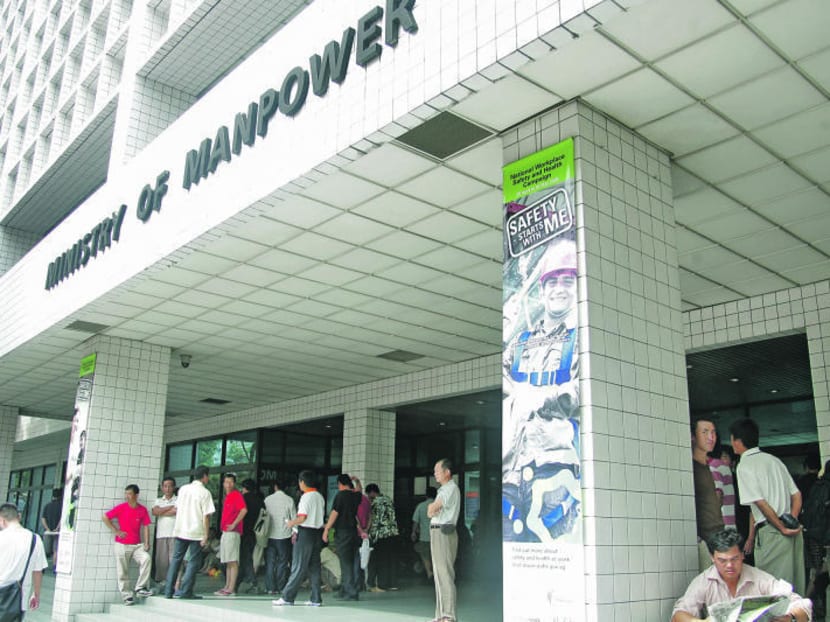New guidelines on issuance of itemised payslips
SINGAPORE — The Ministry of Manpower (MOM), the National Trades Union Congress (NTUC) and Singapore National Employers Federation (SNEF) have developed a set of guidelines on the issuance of itemised payslips, the MOM announced today (Jan 13).
SINGAPORE — The Ministry of Manpower (MOM), the National Trades Union Congress (NTUC) and Singapore National Employers Federation (SNEF) have developed a set of guidelines on the issuance of itemised payslips, the MOM announced today (Jan 13).
The move is to prepare businesses when the issuance of payslips becomes a legal requirement within two years.
The provision of itemised payslips to employees can raise their awareness of their salary components and minimise salary disputes, the tripartite partners said.
The guidelines show how companies, especially small and medium enterprises, such as small family-owned businesses and hawkers, can put in place the system of administering payslips, and provide payslip templates that companies may use and customise based on their own needs.
According to the guidelines, the payslip should include items such as basic salary, total allowances and total deductions for each salary period.
The MOM is also working with IDA and SPRING to develop tools such as simple payslip booklets, downloadable templates, and funding support for companies to develop customised solutions for the issuance of payslips by April.
The guidelines are as follows:
TRIPARTITE GUIDELINES ON ISSUANCE OF ITEMISED PAYSLIPS
1. Providing itemised payslips is a good employment practice. It raises employees’ awareness of their salary components and provides proper documentation which helps to facilitate the resolution of any salary dispute.
2. This set of Guidelines seeks to guide employers, in particular the SMEs, in issuing itemised payslips and to institute good HR practices. SMEs that need further assistance can approach the Singapore National Employers Federation (SNEF) or the Business Advisors at the SME Centres listed at Para 10.
Who should receive a payslip?
3. Employers should issue itemised payslips to all their employees.
When should a payslip be given?
4. Employers should issue itemised payslips at least once a month.
5. For a salary period ending in a particular month, employers should issue payslips to their employees within 7 days after the last day of that month. For example, for payment for work done in January, employers should issue the payslip by Feb 7.
6. Where there are more than one salary period within that month, employers could consolidate all the salary payment details in that calendar month into a single payslip. For example, if the workers are paid fortnightly, employers could issue a single payslip containing details of payment for the two salary periods. They could also choose to issue payslips as and when they pay the workers, which should be at least once a month.
7. Where an employee is dismissed or has his contract of service terminated, employers should issue the payslip together with the payment of any outstanding salary or dismissal/termination payment, and the payslip should itemise such payments.
What form can the payslip take?
8. Employers could issue the payslip in hard and/or soft copies, as long as it contains the relevant information outlined in the next paragraph. Employers are also encouraged to get employees to acknowledge that they have received their payslips.
What should be in a payslip?
9. Payslips should contain the items below. Employers need not include items that are not relevant to the employee. A template and sample payslip are included in the Annexes.
a) Name of employer
b) Name of employee
c) Date(s) of payment
d) Mode of payment (cash/cheque/bank deposit)
e) Start and end dates of each salary period within the month
f) Basic salary for each salary period
g)* Allowances paid for each salary period such as:
All fixed allowances (e.g. transport)
All ad-hoc allowances (e.g. one-off uniform allowance)
h) Start and end dates of each overtime payment period within the month
i) Overtime hours worked
j) Overtime pay for each overtime payment period
k)* Any other additional payment for each salary period such as bonuses, rest day pay and public holiday pay.
l)* Actual deductions made for each salary period such as:
All fixed deductions (e.g. employee’s CPF contribution)
All ad-hoc deductions (e.g. deductions for damage to or loss of goods)
For hourly, daily or piece rated workers, employers should also indicate in the payslip the basic rate of pay (e.g. $10 per hour) and the total number of hours or days worked or pieces produced, within each salary period. For workers who did not complete work for the full duration of the salary period, employers should indicate the total number of days he has worked within the salary period.
m)** Net salary paid in the month
n) Employer’s CPF contribution
*The detailed breakdowns for items 7, 11 and 12 should be reflected in the payslip.
**The formula for item 13 is (6) + (7) + (10) + (11) – (12)







